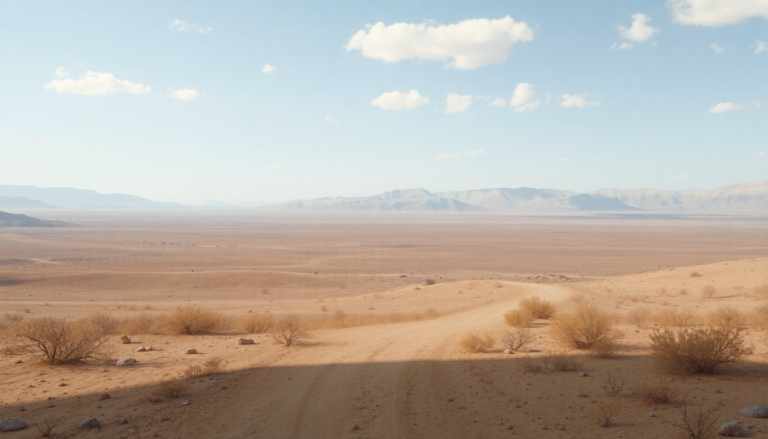Argomenti trattati
Open-world games are all the rage these days, but let’s be honest — some feel like vast deserts of nothingness. You can almost hear the echo of your own footsteps in the emptiness of these sprawling landscapes. It’s a curious phenomenon, really. While you’d expect an expansive world to be teeming with life, many titles just fall flat. I remember when I first booted up some of these games, my excitement quickly turned to disappointment as I wandered through lifeless environments, wondering where all the NPCs had gone.
Why do some open worlds feel so empty?
There’s a fine line between creating a vast, immersive environment and simply filling a game with empty space. Take, for example, *Zelda: Breath of the Wild*. While it boasts a stunning landscape and breathtaking visuals, it often feels devoid of meaningful interactions. Sure, the shrines are unique, but after a while, they start to feel like busywork rather than an engaging part of the adventure. I can’t help but think back to the classic Zelda titles, which had dungeons and intricate puzzles to solve, keeping players on their toes. The vastness of *Breath of the Wild* is beautiful, but it can also feel isolating.
The mixed reception of Biomutant
Then there’s *Biomutant*, a game that promised a lush world filled with factions and karma systems. Yet, when I finally played it, I found myself meandering through large stretches of empty terrain. It’s almost heartbreaking to see such potential squandered on a dull map where loot is scarce, and engagement feels minimal. I often think of how much more enjoyable it could have been if the developers had focused more on filling the world with life, rather than just space.
Starfield and its uninhabited planets
Let’s not forget the anticipation surrounding *Starfield*. The hype was palpable, and the idea of exploring thousands of procedurally generated planets seemed thrilling. But, after diving into the game, I realized that many of those planets felt depressingly barren. It’s ironic how a game that took 25 years to develop could leave players wandering through such lifeless landscapes. The narrative and quest design might have had their moments, yet the world itself felt like a recycled set of bland layouts. I’d find myself wishing for just a bit more life—maybe a few more NPCs or quests that didn’t feel like a chore.
Just Cause 4: A missed opportunity
Ah, *Just Cause 4*. This title had me excited for all the mayhem it promised. But as I hopped into the game, it felt like a shadow of its former self. The vibrant chaos that defined its predecessors was replaced with a darker tone, and the world felt dreary, robbing the game of its charm. Even with the new weather mechanics and diverse regions, it felt like a playground with no one to play with. I found myself longing for the joy of destruction that made the series fun in the first place.
The disappointment of Test Drive Unlimited 2
And who could forget *Test Drive Unlimited 2*? I was excited to relive my childhood memories, only to find that the sequel felt lifeless compared to its predecessor. The beautiful islands of Oahu and Ibiza, while expansive, lacked the dynamic interactions I had hoped for. Racing through the world felt less like a thrilling adventure and more like a monotonous drive through a deserted landscape. It’s a stark reminder that sometimes, bigger isn’t always better.
The shortcomings of Hogwarts Legacy
*Hogwarts Legacy* had a strong start, with its enchanting landscapes and magical puzzles. But as I delved deeper, the repetitive enemy encounters and lack of variety made the world feel generic and uninspired. I remember being excited to explore the grounds, but after facing the same troll variations for the umpteenth time, I felt the thrill fading away. It’s a shame because the potential was there, but the execution left much to be desired.
Horizon Forbidden West: A beautiful yet bland experience
Then there’s *Horizon: Forbidden West*, a graphical marvel that somehow manages to feel bland. Despite the stunning visuals, the world can feel static, with not enough dynamic interactions to make exploration rewarding. Sure, the landscapes are breathtaking, but I often found myself asking, “Where’s the danger? Where’s the excitement?” I mean, I expect a post-apocalyptic world to be filled with peril, but it often felt like I was just going through the motions, admiring the scenery without feeling truly engaged.
Final thoughts on lifeless open worlds
As we continue to explore the realms of open-world gaming, it’s crucial to remember that a larger map doesn’t equate to a richer experience. The industry has made strides in creating beautiful landscapes, but without the accompanying life and interaction, these worlds can feel like mere backdrops to our adventures. I find myself pondering the future of open-world games—will developers learn from these missteps and create worlds that are not just vast, but truly vibrant? Only time will tell, but I remain hopeful.

